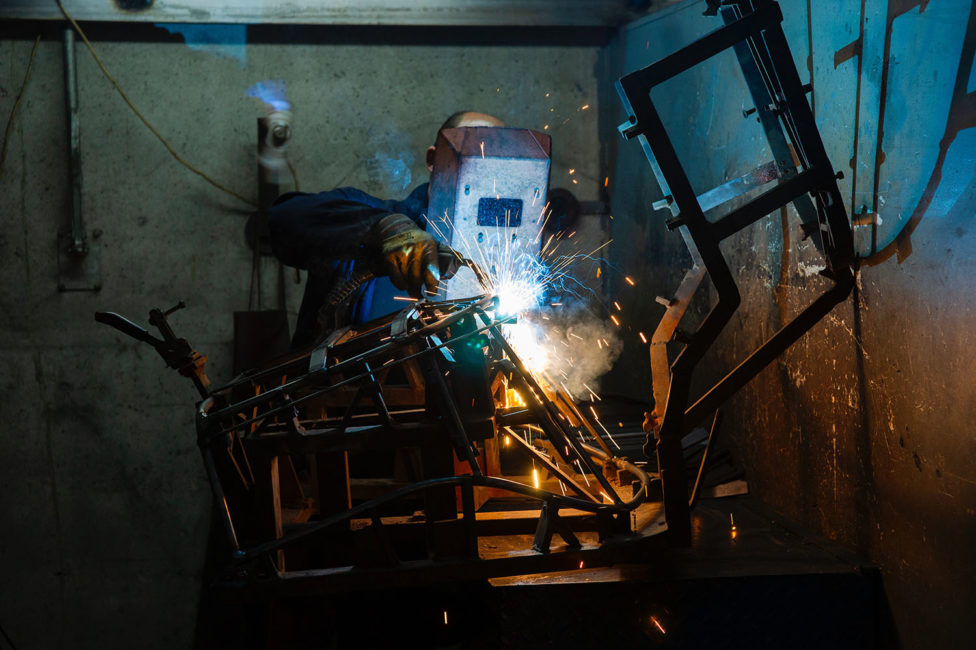If you like working with your hands, have good attention to detail, a good grasp of mathematics and the ability to work well independently, welding might be the ideal career for you. Because Australia is currently experiencing a shortage of skilled welders, employers are actively recruiting apprentices who can help close the growing skills gap.
According to the CEO of Weld Australia, Geoff Crittenden, the welding skills shortage is partly due to the ageing Australian population. He said: “This skills shortage is compounded by a rapidly ageing welding workforce; for example, with approximately 30% of Australia’s existing welding workforce aged over 45 years. This heavy proportion of older skilled trade workers, particularly welders, puts into focus the looming issues that industrial sectors are likely to face when baby boomers finally reach retirement age – job positions related to welding will simply become impossible to fill, particularly given the projected increased demand.” Thankfully, a growing number of individuals are undertaking welding apprenticeships to gain the necessary skills and experience to succeed in the industry.
How to Find Welding Apprenticeships
If you’re interested in undertaking a welding apprenticeship, you should contact the Australian Apprenticeship Support Network for more information. The organisation provides helpful support services to help apprentices find a suitable apprenticeship that aligns closely with their skills.
Once you’ve decided on your ideal career path, the organisation will help you find a suitable employer and registered training organisation to complete your course and draw up a legally binding contract for both parties to sign. Additionally, the Australian Apprenticeship Support Network will also help you access financial support through schemes including the Trade Support Loan and the Additional Identified Skills Shortage payment incentive.
The Australian Apprenticeship Pathways (AAPathways) can help if you require more information and guidance by providing helpful resources for those considering an apprenticeship. Resources include:
- Job and training descriptions.
- Quizzes to determine your ideal work type.
- Job pathway charts showing career progression opportunities.
Typical Duties of a Welding Apprentice
Welding apprentices will work in workshops, factories and industrial production and engineering environments. During the apprenticeship, which will take approximately four years to complete, trainee welders will use power tools, carry out mechanical cutting, apply safe welding practices and repair, replace and modify fabrications.
Typical Requirements of a Welding Apprentice
There are no specific educational prerequisites that determine your eligibility for a welding apprenticeship. However, employers require apprentices to complete Year 10. Furthermore, you can join the welding field with no formal qualifications, but only if you can demonstrate your welding competency to an employer. Despite this, most in the industry gain the skills they need by completing a practical apprenticeship. For example, 59.4% of welders in Australia have completed a Certificate III or IV qualification.
Skills Required
Welding is a high-skill job, and employers want to hire individuals likely to thrive in the role. Therefore, prospective welding apprentices should have strong mathematical skills, steady hands, good hand-eye coordination, good interpersonal skills and attention to detail. Additionally, prospective apprentices should effectively coordinate with others, think critically, and keep track of progress to determine whether changes or improvements are needed to their work.
After completing your apprenticeship in welding, you will be trained to safely use machines and tools and create detailed technical plans, blueprints, drawings, and models. By the end of your apprenticeship, you’ll also have a good grasp of using engineering, science and technology to design goods and services and a good understanding of production processing.
Qualified Welder Average Wage
According to Job Outlook, an initiative created by the Australian Government National Skills Commission, the median full-time welder receives $1,541 per week before tax. Predictions indicate that the sector’s future growth will be stable over the next five years.
The hourly wage of a qualified Welder varies by state.
Sydney, New South Wales: AU$28.97 per hour.
Melbourne, Victoria: AU$27.75 per hour.
Brisbane, Queensland: AU$25.63 per hour.
Darwin, Northern Territory: AU$31.43 per hour.
Perth, Western Australia: AU$28.03 per hour.
Canberra, Australian Capital Territory: AU$33.15 per hour.
Hobart, Tasmania: AU$30.28 per hour.
Those working in the welding field are present in every Australian territory. However, Victoria and New South Wales have the highest concentration of welders, 28.1% and 25.7%, respectively. Because of supply and demand, states with fewer welders offer a better wage once qualified.
How to Become a Welder
To become a welder, you typically need to gain a qualification through a practical apprenticeship, which normally takes between 42 and 48 months to complete. As an apprentice, you will enter into a formal contract with your employer, who will help you learn the skills to complete your qualification. In addition, you will spend time learning practical skills on the job and have some structured training time with your chosen apprenticeship training provider.
Certificate III Welder
A Certificate III in Welding involves assembling metal fabricated products such as structures, frames, plate and sheet assemblies, pipe-work and vessels using various welding techniques. Additionally, welders may use techniques including welding ferrous and non-ferrous metal plates or sheets. To learn more about becoming a Welder, please visit the Australian Apprenticeship Pathways website.
Certificate III Sheetmetal Worker
A Certificate III qualification to become a Sheetmetal Worker will have you producing metal sheet products such as ducting, hoods, and lightweight structures. Additionally, you will produce sheet assemblies, tanks and containers using tools, welding and thermal cutting equipment and development techniques. To learn more about becoming a Sheetmetal Worker, please visit the Australian Apprenticeship Pathways website.
Start your welding career by undertaking an apprenticeship
Welding is a highly-skilled and enriching job with excellent career progression prospects. If you would like to learn more about apprenticeships in welding, please visit the Australian Apprenticeships and the Australian Apprenticeship Pathways websites.


